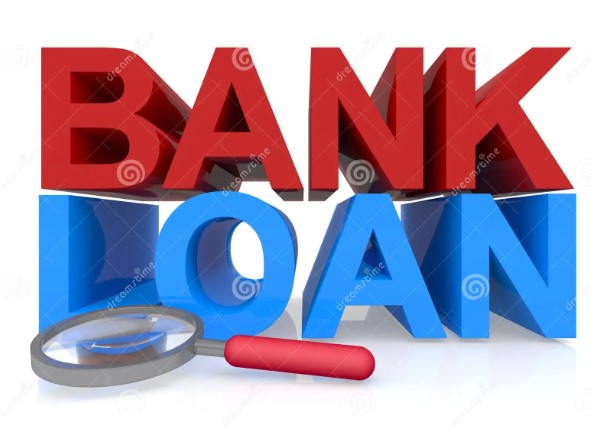How to Apply for a Bank Loan Successfully-2025
Getting Your Application Ready
The first step in applying for a bank loan involves gathering all necessary documentation. Start by collecting proof of income, tax returns, bank statements, and other relevant financial information. These documents will help the bank assess your financial health and determine your loan eligibility.
Having a good credit score is crucial in the loan application process. Your credit score is a numerical representation of your creditworthiness, and a high score can increase your chances of getting approved for a loan with favorable terms. If your credit score is not where it needs to be, take steps to improve it before applying. This might involve paying down existing debts, avoiding new credit inquiries, and ensuring all bills are paid on time.

In addition to gathering documentation, it’s important to determine the exact amount of money you need to borrow. Calculate your financial needs carefully and ensure the loan amount aligns with your capacity to repay. Lenders will want to see a clear purpose for the loan and a well-thought-out plan for how you intend to use the funds. Whether you’re planning to use the loan for a home renovation, starting a business, or consolidating debt, having a detailed explanation will strengthen your application.
Preparing a repayment plan is another key step. Outline how you plan to make regular payments and ensure that this plan fits within your budget. This will demonstrate to the bank that you are responsible and have considered the financial commitment you are making. Additionally, being aware of your debt-to-income ratio is essential, as banks use this metric to evaluate your ability to take on new debt.
Another important aspect of getting your application ready is ensuring that all information provided is accurate and complete. Incomplete or incorrect applications can lead to delays or even rejection. Double-check all details and make sure you include all required documents. If you are unsure about any part of the application, consider consulting a financial advisor or the bank’s customer service for guidance.
Before submitting your application, review the terms and conditions of the loan you are applying for. Understand the interest rates, fees, and repayment schedules associated with the loan. This knowledge will help you make an informed decision and avoid any surprises down the road.
Taking the time to thoroughly prepare your loan application will not only improve your chances of approval but also position you as a credible and responsible borrower. Remember, meticulous preparation is key to navigating the loan process successfully.
Grasping Bank Loans
Before you approach a bank, it’s important to understand the types of loans available. Common options include personal loans, home loans, auto loans, and business loans. Each type of loan has its specific terms, interest rates, and repayment schedules.
Personal loans are usually unsecured, meaning they don’t require collateral. They are often used for consolidating debt, covering emergency expenses, or financing large purchases. Interest rates on personal loans can vary widely based on your credit score and the lender’s policies.
Home loans, or mortgages, are designed for purchasing property. These loans are typically long-term, with repayment periods ranging from 15 to 30 years. Mortgages usually have lower interest rates compared to other types of loans because they are secured by the property itself. It’s important to understand the difference between fixed-rate and adjustable-rate mortgages. Fixed-rate loans have a constant interest rate for the life of the loan, while adjustable-rate mortgages can change over time, often after an initial fixed period.
Auto loans are specifically for purchasing vehicles. Like home loans, auto loans are usually secured, meaning the vehicle serves as collateral. This typically results in lower interest rates compared to unsecured loans. Auto loans generally have shorter repayment terms, often ranging from three to seven years.
Business loans are designed to support business operations, expansion, or startup costs. These can be either secured or unsecured, and they come with varying terms and conditions. Small business owners might also consider loans backed by the Small Business Administration (SBA), which often have more favorable terms but require meeting specific criteria.
When considering a bank loan, it’s essential to weigh the pros and cons. On the positive side, bank loans can provide access to significant funds, which might be necessary for major purchases or investments. They also often come with lower interest rates compared to credit cards or other high-interest debt options. Some loans, like mortgages or student loans, may offer tax benefits, which can be an added advantage.
However, there are downsides to consider. One of the main drawbacks is the interest cost over the life of the loan, which can be substantial. Additionally, some loans come with strict repayment conditions and fees for early repayment or late payments. Failing to meet repayment terms can damage your credit score and financial health.
Understanding these aspects can help you make informed decisions about whether a bank loan is the best financial solution for your needs. Being well-informed will not only assist in choosing the right type of loan but also in managing it effectively once you secure the funds.
Attending a Meeting with the Bank
When you receive an invitation to meet with a loan officer, it’s crucial to make the most of this opportunity. Approach the meeting with professionalism and preparation. Dress in business attire and gather all necessary documentation to bring with you, including your loan application, proof of income, tax returns, bank statements, and any other relevant financial records.
Start the meeting by introducing yourself and stating the purpose of your visit. Be ready to clearly and concisely explain why you are seeking a loan and how you plan to use the funds. This shows the loan officer that you have a well-thought-out plan and are serious about your financial goals. Articulate the purpose of the loan, whether it is for a home renovation, business expansion, or another specific need, and outline your repayment strategy.
During the discussion, be honest and transparent about your financial situation. The loan officer may ask questions to better understand your financial health and ability to repay the loan. Answer these questions accurately and provide any additional information or documentation requested.
It’s equally important to use this time to gather more information about the loan terms. Ask about the interest rate, repayment schedule, and any fees associated with the loan. Inquire about penalties for early repayment or late payments, as these details can impact your financial planning. Understanding these terms will help you make an informed decision and ensure that the loan aligns with your financial capabilities and goals.
Take notes during the meeting to help you remember key points discussed. If any terms are unclear, ask for clarification. This will demonstrate to the loan officer that you are diligent and committed to understanding the full scope of the loan agreement.
Finally, discuss the timeline for the loan approval process and what the next steps will be. Knowing what to expect can help you stay organized and prepared as you move forward. If there are any additional documents or information needed after the meeting, make sure to provide them promptly to avoid delays in the application process.
By approaching the meeting with preparation and professionalism, you can effectively communicate your needs and increase your chances of securing the bank loan you are seeking.
Following Loan Approval
Once your loan has been approved, it’s important to manage the funds and repayment process effectively. Start by setting up a repayment plan that fits within your budget to ensure you can make timely payments. This might involve setting up automatic payments through your bank to avoid missing due dates or creating a detailed monthly budget to keep track of your expenses and loan payments. Consistency in your repayments will help you maintain a positive credit rating and avoid any penalties or additional fees.
Understanding the terms and conditions of your loan agreement is crucial. Make sure you are aware of the interest rate, repayment schedule, and any additional fees associated with the loan. Knowing these details will help you plan your finances more accurately and avoid any surprises down the line.
Keep in mind that some loans have penalties for early repayment. If you have extra funds and are considering paying off your loan ahead of schedule, first check if there are any prepayment penalties. These penalties can sometimes offset the benefits of paying off the loan early, so it’s important to understand the implications.
Monitor your loan balance and payment history regularly. Keeping an eye on your account will help you catch any errors or discrepancies early and allow you to address them promptly. This vigilance can save you from potential financial headaches and ensure that you remain in good standing with the bank.
It’s also wise to review your budget periodically. Your financial situation might change over time due to various factors such as changes in income, unexpected expenses, or lifestyle changes. Regularly updating your budget can help you stay on top of your loan payments and manage your finances effectively.
If you encounter any financial difficulties that might impact your ability to make payments, contact your bank immediately. Banks often have programs or solutions to help borrowers who are facing temporary financial challenges. Proactively communicating with your lender can prevent your account from falling into delinquency and protect your credit score.
Additionally, consider setting up an emergency fund if you don’t already have one. This fund can provide a financial cushion in case of unexpected expenses or income loss, ensuring that you can continue to meet your loan obligations without stress.
Lastly, keep all related documentation in a safe place. This includes your loan agreement, payment receipts, and any correspondence with the bank. Having these documents organized and easily accessible can be very helpful if you need to reference them in the future.
By managing your loan responsibly and staying informed about your financial commitments, you can make the most of your approved loan and maintain a healthy financial standing.
Handling Loan Rejections
Rejection is always disappointing, but it’s important to understand why your loan application might be denied. Common reasons include a low credit score, insufficient income, or high existing debt levels. Take this as an opportunity to improve your financial standing.

After a rejection, review the reasons provided by the bank and take steps to address them. This might involve improving your credit score, reducing debt, or saving more for a larger down payment. Once you’ve made the necessary changes, consider reapplying or exploring other lending options.
By following these guidelines, you can navigate the bank loan process with greater confidence and success. Remember, thorough preparation and understanding are key to securing the financing you need.



